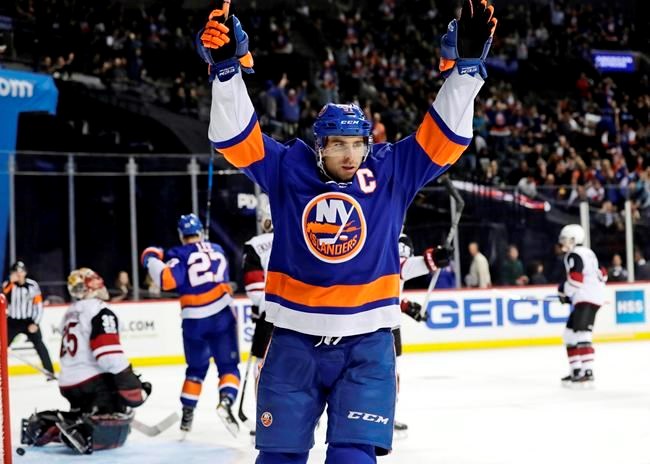The nets aren't bigger, the goaltenders aren't smaller and yet scoring is up significantly around the NHL.
Through the first two months of the season, goals are up more than 12
"That's what the league wanted," San Jose Sharks
The uptick can be credited to a concerted crackdown on slashing by issuing more penalties and a league-wide move toward younger and more skilled players. The current pace of 6.01 goals per game would be the highest since 2005-06, when a series of rule changes were put in to open up the game and get more scoring to attract new fans.
"Teams try to go for it more," said New York Rangers goaltender Henrik Lundqvist, whose goals-against average is 2.66, nearly 13
Deputy NHL Commissioner Bill Daly said general managers are pleased with the current pace, which has lasted beyond the typical high-scoring October as
"I do think that has created certainly more room for our players to be offensive," Daly said. "I think over time, clearly since we increased the standard for hooking and holding and interference (in 2005-06), slashing has become a way to defend and an effective way to defend, and I think this year it's a less effective way to defend."
Players have noticed, even if some are frustrated at the varying degrees of what rises to the level of a slashing penalty. Every referee is watching closely.
"The last five years, you could do so much more with your stick and probably now lots of players are afraid to use their sticks," Los Angeles Kings forward Jussi Jokinen said. "I think everybody wants to see more goals, so scoring being up, I think it's good."
Everyone except maybe the goaltenders may think so, but it's not like they've been terrible. Four goalies who have played at least 20 games have a save percentage of .930 or higher.
"The goaltenders, they haven't been any better than they are right now and some of them are still getting lit up pretty good," said Washington Capitals coach Barry Trotz, who has the league's leading goal-scorer in Alex Ovechkin.
Certainly the emphasis on slashing has helped players such as Ovechkin, Calgary's Johnny Gaudreau and New York Islanders star John Tavares, who can do wonders with even a few extra inches of space. Columbus Blue Jackets forward Josh Anderson, who scored 10 goals in his first 15 games, said slashing is on everyone's mind and "guys are not getting (their sticks) up into the hands as much as they used to."
Slashing and otherwise, there have been 173 more power plays than last season and teams are converting on 19.7
"That's one more thing that the power play has to worry about," Capitals winger T.J. Oshie said. "Now they don't just have to worry about scoring goals. They have to worry about their turnovers, what plays they make, how risky they want to get because there is that chance if it goes the other way and it's a 2-on-1, it could end up in the back of your net."
Los Angeles coach John Stevens said teams are in "attack mode" all the time now, and Trotz estimates that he spends three-quarters of time trying to figure out how to score more.
But risk is also inherent in the NHL getting younger and featuring so many rookie scorers such as Arizona's Clayton Keller, Chicago's Alex DeBrincat and Vancouver's Brock Boeser. The average age of an NHL player is 27 and Daly said the number has dropped over the past several years. He said more scoring is a byproduct as junior hockey and college programs get better at making players NHL-ready sooner.
Team composition has also changed. There are fewer journeyman faceoff specialists and grinders, and more players kept for speed and skill.
"Just the
For all the
"I think it's still early to say," Blackhawks winger Richard Panik said. "The game is going to get tighter. It always does before playoffs."
___
Follow Hockey Writer Stephen Whyno on Twitter at https://twitter.com/SWhyno
___
More NHL hockey: https://apnews.com/tag/NHLhockey
Stephen Whyno, The Associated Press
